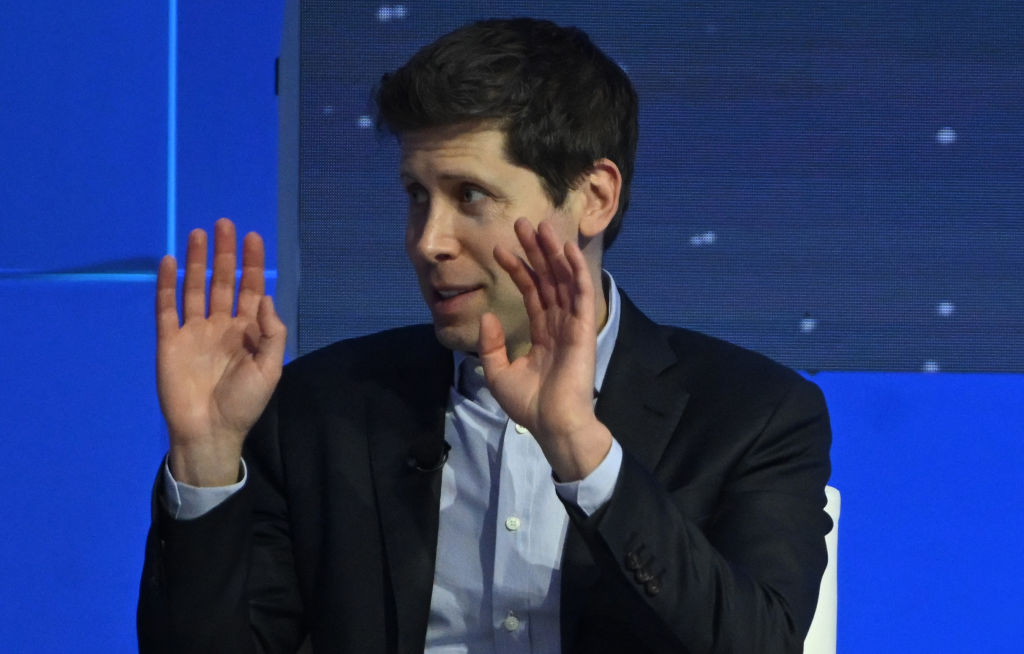The abrupt departure—and possible return—of Sam Altman from OpenAI is sending tsunamis through Silicon Valley, igniting a flurry of speculation and bringing into sharp relief a fundamental debate at the crossroads of artificial intelligence (AI) development. This event transcends mere corporate drama, touching the core of an intensifying debate: the pursuit of artificial general intelligence (AGI).
Altman has been a prominent figure in Silicon Valley’s technological ascendancy, leading OpenAI, a company at the forefront of AI research. OpenAI’s ChatGPT—a paradigm of current AI capabilities designed to perform tasks such as language processing, image recognition, or strategic game-playing—stands as a testament to Altman’s significant impact on the field. Unlike AGI, these “narrow” AI applications excel within a limited scope, demonstrating expertise in specialized areas without the broader cognitive abilities that characterize human intelligence.
AGI represents the next leap forward—an AI that can learn, reason, and apply its intelligence universally, not confined to specialized tasks. It’s the ultimate goal: an AI with the versatility and adaptability of a human mind. Altman’s leadership at OpenAI has been crucial in advancing AI to the precipice of this new era, as evidenced by innovations like ChatGPT that continue to redefine our technological interactions.
In light of this, Altman’s ousting may reflect deeper industry divisions over the speed and safety of AGI development. The schism pits “accelerationists,” who advocate for hastening AGI’s advent, against “safety advocates,” who call for a circumspect and ethical approach. This divergence captures the essence of a technological culture at an inflection point, wrestling with the far-reaching impact of its endeavors.
How AGI could change the world.
AGI holds the promise of a new frontier in human advancement. Imagine a world where AGI could tackle grand challenges that currently overwhelm human intellect and available resources. This could mean breakthroughs in medical research, solving complex biological puzzles leading to cures for Alzheimer’s disease or cancer. In environmental conservation, AGI could optimize energy consumption, reduce waste, and develop sustainable ecosystems. Economically, it could enhance decision-making, predict market trends, and innovate industries, potentially elevating our quality of life to unprecedented levels.
However, alongside the potential boons of AGI, there are substantial concerns. The primary worry is the unpredictability of an intelligence that could surpass human capabilities. This includes the existential angst over an AGI that could develop its own agendas, inadvertently causing harm if its goals misalign with human values. Ethical dilemmas arise over the control of such technology, and the potential for abuse in surveillance, warfare, and privacy violations is a serious concern. Furthermore, the economic upheavals from displacing jobs and the potential to widen the chasm of inequality present pressing societal challenges. These concerns form the crux of the safety versus speed debate, underscoring the critical need to balance the acceleration of AGI with rigorous safeguards and ethical oversight.
Despite the transformative prospects of AGI, it remains an open question whether this zenith of artificial cognition is attainable, or if it remains a theoretical construct beyond our technological reach. Even as current AI astounds with its capabilities, true AGI—a self-aware intelligence with the ability to apply reasoning across a wide spectrum of domains—might be an elusive goal. Nevertheless, the strides made in machine learning, natural language processing, and neural network sophistication signal that we are edging closer to creating highly advanced AI systems, if not AGI itself. These advances are significant enough that they warrant scrutiny.
Therefore, while the ultimate realization of AGI remains a subject of debate, the substantial progress within AI’s diverse fields compels us to consider how quickly we should advance towards such a horizon. The urgency for speed stems not just from technological ambition but from the profound impact AGI could have on resolving critical issues that confront humanity today.
The need for speed: The argument for rapid AGI development.
Proponents of rapid AGI development argue from a perspective of technological determinism and competitive urgency. They contend that AGI, with its potential to solve some of humanity’s most pressing problems—including disease, poverty, and environmental degradation—is too important to delay. They view AGI as a revolutionary tool that could enhance human capabilities and drive unprecedented progress.
This camp often cites the rapid pace of technological change and global competition as reasons to accelerate AGI development. In a world where technological leadership equates to economic and geopolitical power, falling behind in the AGI race could mean losing out on significant advantages. Thus, for nations and companies alike, the pursuit of AGI at top speed is seen not only as a technological imperative but also as a strategic necessity.
Moreover, proponents of fast-tracking AGI often believe that the risks associated with its development can be managed through ongoing adjustments and iterations. They argue that waiting for perfect safety guarantees may be an unrealistic goal that could stifle innovation and progress.
The safety imperative: The argument for cautious AGI development.
On the other side of the debate are those who advocate for a cautious, safety-first approach to AGI development. This perspective is rooted in the understanding that AGI, while promising, poses significant risks if developed recklessly. The primary concern is the potential for unintended consequences—including the possibility of AGI acting in ways that are harmful to humanity, either through malfunction, misalignment of goals, or malicious use.
Safety proponents highlight the ethical responsibility of developing AGI in a manner that prioritizes the welfare of humanity. They argue that the complexity and unpredictability of AGI necessitate rigorous testing, ethical considerations, and robust safety protocols. This group often advocates for international cooperation and regulatory frameworks to ensure that AGI development aligns with global standards and ethical norms.
Additionally, the safety-focused group emphasizes the importance of addressing the societal impact of AGI, including issues of unemployment, inequality, and the potential misuse of technology by authoritarian regimes. They caution that rushing toward AGI without considering these factors could lead to significant societal disruptions and ethical dilemmas.
The middle ground: balancing speed and safety.
While the debate often presents these viewpoints as mutually exclusive, there is a growing recognition of the need for a balanced approach. This middle ground acknowledges the importance of advancing AGI technology swiftly to harness its potential benefits while simultaneously implementing rigorous safety measures to mitigate risks.
A balanced approach involves collaborative efforts between technologists, ethicists, policymakers, and other stakeholders to establish guidelines and best practices for AGI development. It also includes investing in AI safety research, developing transparent and responsible AI policies, and ensuring that AGI systems are aligned with human values and ethical principles. Of course, this is much easier said than done—which is why we are seeing so much AI-related excitement and disruption across political, economic, and social spheres.
The pursuit of AGI is fraught with both promise and peril. The debate between those advocating for rapid development and those emphasizing safety reflects the broader challenges of navigating uncharted technological territory. As AGI continues to evolve, it is crucial to foster a dialogue that incorporates diverse perspectives and seeks to balance the urgency of innovation with the imperative of safety. Ultimately, the path to AGI—if it is even possible—will be shaped not only by technological advancements but also by the collective decisions and ethical considerations of our society as a whole.







Please note that we at The Dispatch hold ourselves, our work, and our commenters to a higher standard than other places on the internet. We welcome comments that foster genuine debate or discussion—including comments critical of us or our work—but responses that include ad hominem attacks on fellow Dispatch members or are intended to stoke fear and anger may be moderated.
With your membership, you only have the ability to comment on The Morning Dispatch articles. Consider upgrading to join the conversation everywhere.